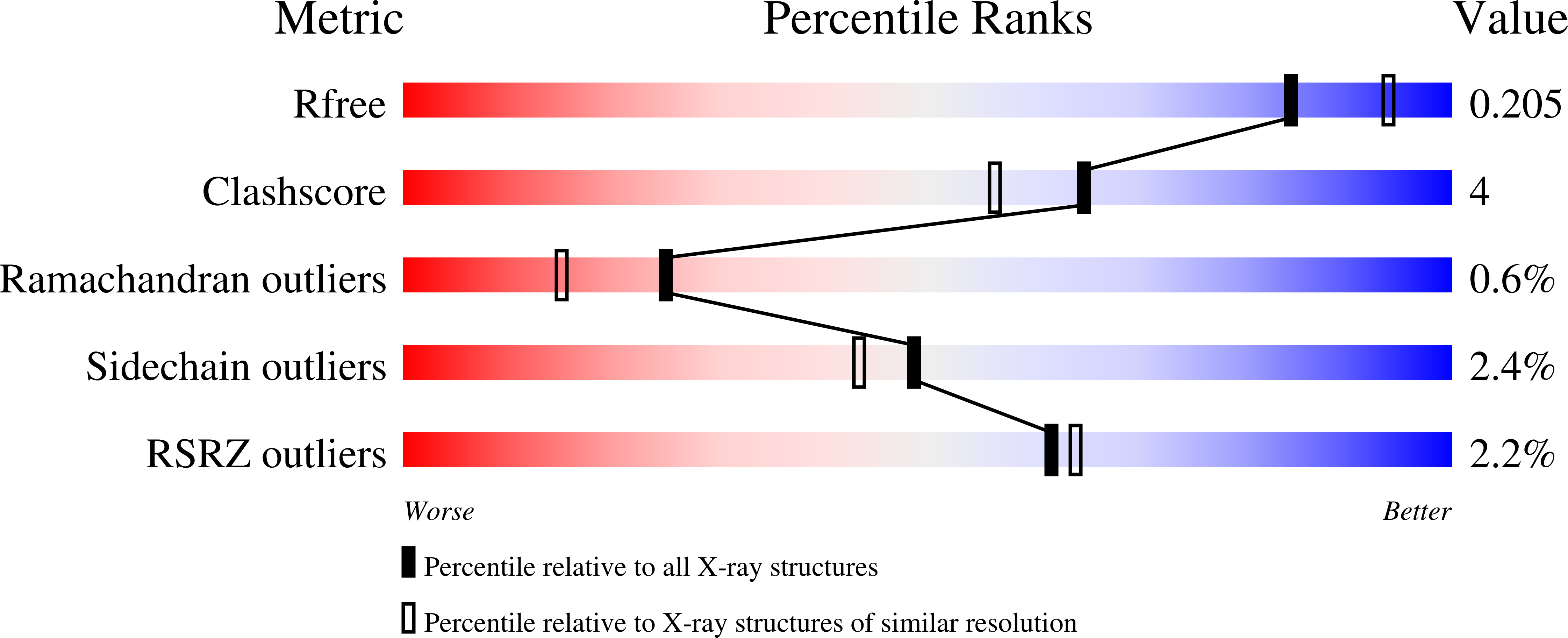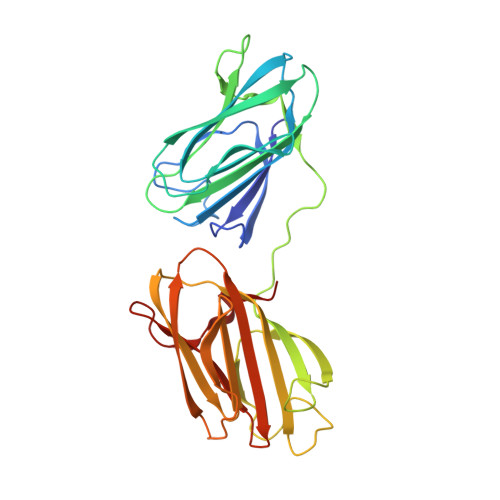Distinctive ligand-binding specificities of tandem PA14 biomass-sensory elements from Clostridium thermocellum and Clostridium clariflavum.
Grinberg, I.R., Yaniv, O., de Ora, L.O., Munoz-Gutierrez, I., Hershko, A., Livnah, O., Bayer, E.A., Borovok, I., Frolow, F., Lamed, R., Voronov-Goldman, M.(2019) Proteins 87: 917-930
- PubMed: 31162722
- DOI: https://doi.org/10.1002/prot.25753
- Primary Citation of Related Structures:
6QDI, 6QE7 - PubMed Abstract:
Cellulolytic clostridia use a highly efficient cellulosome system to degrade polysaccharides. To regulate genes encoding enzymes of the multi-enzyme cellulosome complex, certain clostridia contain alternative sigma I (σ I ) factors that have cognate membrane-associated anti-σ I factors (RsgIs) which act as polysaccharide sensors. In this work, we analyzed the structure-function relationship of the extracellular sensory elements of Clostridium (Ruminiclostridium) thermocellum and Clostridium clariflavum (RsgI3 and RsgI4, respectively). These elements were selected for comparison, as each comprised two tandem PA14-superfamily motifs. The X-ray structures of the PA14 modular dyads from the two bacterial species were determined, both of which showed a high degree of structural and sequence similarity, although their binding preferences differed. Bioinformatic approaches indicated that the DNA sequence of promoter of sigI/rsgI operons represents a strong signature, which helps to differentiate binding specificity of the structurally similar modules. The σ I4 -dependent C. clariflavum promoter sequence correlates with binding of RsgI4_PA14 to xylan and was identified in genes encoding xylanases, whereas the σ I3 -dependent C. thermocellum promoter sequence correlates with RsgI3_PA14 binding to pectin and regulates pectin degradation-related genes. Structural similarity between clostridial PA14 dyads to PA14-containing proteins in yeast helped identify another crucial signature element: the calcium-binding loop 2 (CBL2), which governs binding specificity. Variations in the five amino acids that constitute this loop distinguish the pectin vs xylan specificities. We propose that the first module (PA14 A ) is dominant in directing the binding to the ligand in both bacteria. The two X-ray structures of the different PA14 dyads represent the first reported structures of tandem PA14 modules.
Organizational Affiliation:
Department of Molecular Microbiology and Biotechnology, Tel Aviv University, Tel Aviv, Israel.















